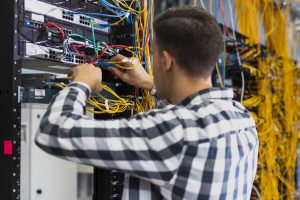Mapping a beverage company equipment and data centers, infrastructure specialist Jeferson Nascimento was able to integrate the technologies, improving the videoconferencing performance in the company. Problem has persisted for 10 years
Anyone who has a telepresence room knows that any connection problem generates big impacts in the routine – always full of meetings. Now, imagine when this instability has lasted 10 years?
This was the case of one of our customers that operates in the beverage industry. With 50 telepresence rooms in Latin American, the company took a decade to achieve a stable and high performance network for video conferencing.
The person responsible for finding and solving the failure was Jeferson Nascimento, Nap IT infrastructure specialist. “Data packets used voice class, with a smaller width than video, during meetings. It made the technology perform poorly, as if a download were done on dial-up and not broadband, “he points out.
Figuring out the Connection Problem
According to Jeferson, the Service Quality (QoS – Quality of Service), which has the task of ensuring that data flows between two network points, was misapplied in the infrastructure.
“The perfect settings application ensures that the transmission leaves site A for site B without compressing the video. When it does not happen, the image becomes pixelated or there is freezing during a meeting, “he says.
Arriving in this diagnosis, the engineer mapped each equipment individually.
It was at this point that the specialist identified that the configuration was not correct. Even after adjustments and a new analysis, the technologies performance did not reach the desired level.
By that, the next step was to evaluate the switches and routers understanding how they exchanged local traffic with the internet carrier. The two analyzes totaled just over 30 equipment and two data centers in Argentina, Uruguay, Paraguay and Bolivia.
QoS was the key to adjusting video conferencing
Understanding and solving the problem, the Nap IT consultancy acted for almost two months. “We’ve been auditing for a month and a half and identifying which machines the configuration was incorrect. Then I went to Argentina, where I spent a week adjusting the equipment locally with the local team, “says Nascimento.
The engineer explains that the way was to use best practices for the correct QoS installation. “QoS is applied directly to the equipment. Each model has a standard application and this application was made directly on machines that were in wrong configuration”, he says.
After 10 years undergoing the impact of a poor configuration, the Nap IT resolution ensured better data traffic, which in turn, made the telepresence rooms to act with high quality and performance.
Are you having problems with your network? Talk to one of our consultants and find out why a Tuning Master will make the difference in your company!







